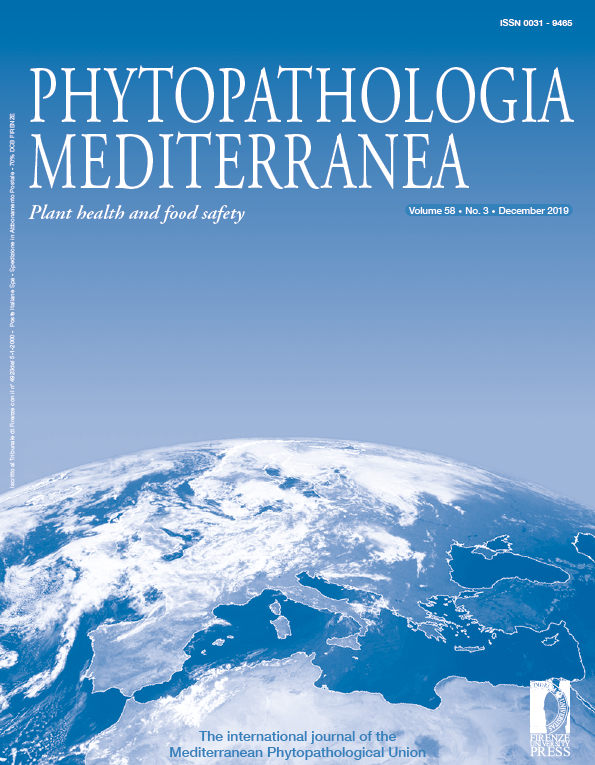Published 2019-12-30
Keywords
- Branch canker,
- biocontrol,
- Bacillus,
- Halomonas elongata
How to Cite
Abstract
Significant losses of clementine trees (Citrus × clementina) due to Phytophthora branch canker were observed in the Cap Bon Peninsula in northeastern Tunisia. This disease is caused by Phytophthora citrophthora. The low efficiency of available cultural and host resistance disease management methods, and potential harmful impacts of pesticide strategies, lead to a search of new control alternatives. This study investigated potential biocontrol agents. The halophilic bacterial strains Bacillus pumilus M3-16 and Halomonas elongata L80, previously selected for their antifungal activity, were assessed in a greenhouse trial. In addition, 69 endophytic bacteria were isolated from citrus roots and assessed for their antagonistic activities. Five isolates were selected because they showedstrong growth inhibition of P. citrophthora in dual culture tests. Based on phenotypic characteristics, biochemical tests and sequence analyses of the 16S region of rDNA, the bacteria were identified as Bacillus pumilus (S19), Bacillus amyloliquefaciens (S24), Bacillus siamensis (S54) Paenibacillus polymyxa (S31), and Pseudomonas veronii (S40). These metabolized different carbon sources, and possessed antibiotic genes, produced siderophores and phytohormones, and solubilized phosphates. In greenhouse trials, two endophytic strains (S24, S31) and two extremophile strains (M3-16, L80) were also assessed, these bacteria significantly reduced (P< 0.0001) necrotic lesions on host plants, by 35% for strain S24 of Bacillus amyloliquefaciens to 51% for strain L80 of Halomonas elongata. This is the first report of Halomonas sp. Controlling a Phytophthora sp. The strains described in this study offer a foundation for developing an efficient biofungicide.







